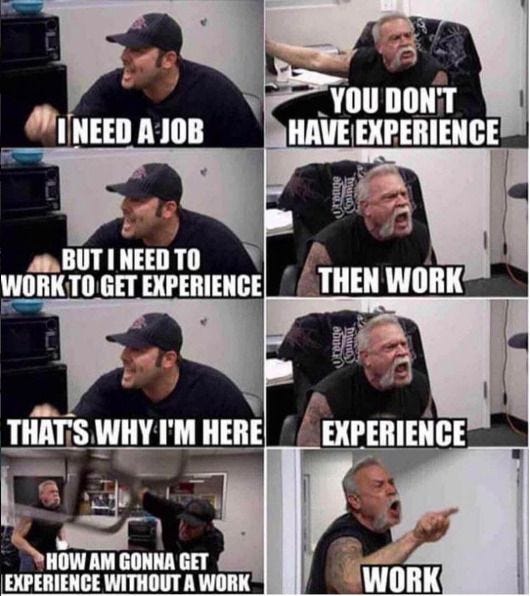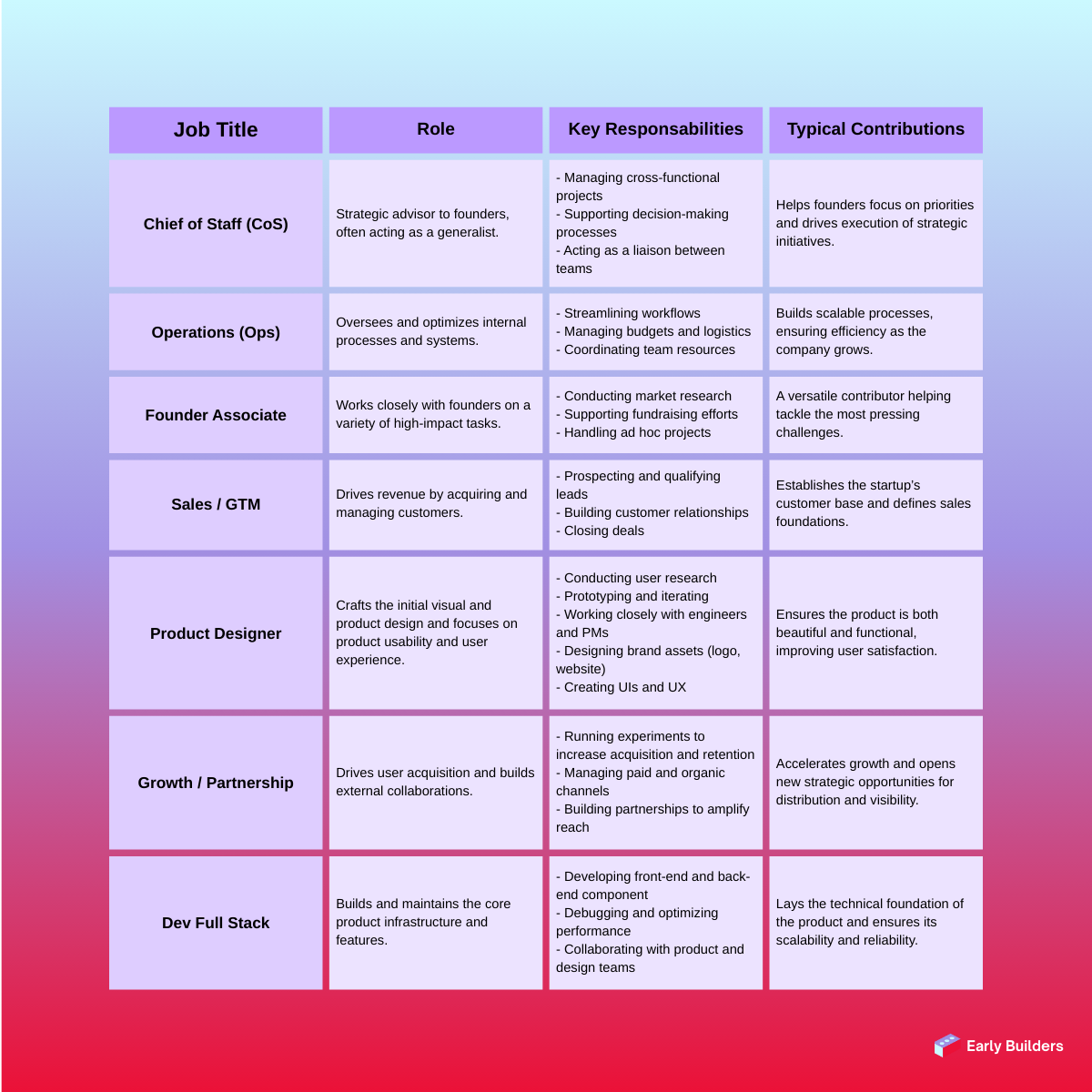Becoming one of the first: Inside the role of early-stage employees
Understanding the role, mindset, and impact of startup’s first hires
What it really means to be one of the first employees in an early-stage startup
Joining an early-stage startup as one of the first employees is an exhilarating ride — full of uncertainty, impact, and rapid learning. In this article, we break down what it means to be an early employee, the types of roles you might take on, and what to expect as you help shape a company from the ground up.
An early employee in an early-stage startup is typically defined by their role, timing of joining, and contribution during the company's foundational phase.
Among the first 10 to 50 employees, depending on the company’s size. Typically, the early employee joins before the startup has achieved significant funding, market traction, or a fully developed product. Its hiring often occurs during the seed or pre-seed stage, and before the company has a clear product-market fit.
Once the company is growing, those early employees are gold.
As explained by Maylis Amram, the first hire at Spendesk, the first employees of unicorn startups are as rare as they are sought after in the job market. Due to their rarity, the first employees of unicorn startup enjoy a certain prestige.
“When I announced my departure from Spendesk, I received between thirty and forty requests. That says something important about your career.”
- Maylis Amram, #1 Employee and ex-senior PMM at Spendesk - Les Echos
Who are the early employees in early-stage startups?
In early-stage startups, the backgrounds of candidates for these roles are often diverse, and there is no single "ideal" profile. However, certain skills, experiences, and interests can make candidates more suited to these roles.
Candidates often come from fields such as innovation-focused programs, have a strong interest in technology, experience in development or commercial roles, or have previous exposure to startups or venture capital.
Startups often value adaptability, problem-solving skills, and a strong alignment with the company’s mission over formal qualifications.
Since the roles of early employees vary as widely as the startups themselves, there is no single, definitive job title or description.
Generally, the first employees are engineers, design / product employees and salespersons. However, here are some examples of positions you might encounter:
Here are examples of first hiring in well-known startups:
Understanding your role
Early employees in startups are not just employees; they are foundational team members who shape the company's future. Your role will be multifaceted and ever-evolving.
Early employees usually take on broad, undefined roles, often wearing multiple hats. They are heavily involved in shaping the product, company culture, and foundational processes. They work directly with the founders and have a significant influence on key decisions.
Early roles don’t always come with clear labels. You might start in Sales but end up contributing to Product or Ops. Here are a few examples of job titles and what they typically involve — though expect to go far beyond the scope of any one job description.
💡 Tip for Early Builders: Remember that your role will evolve constantly — don’t feel confined by the original job description. Question it regularly and adapt as the company grows. In the early days, you’ll likely take on a variety of responsibilities, and it’s normal to only have a clear view of the next three months, not the full year.
The common points of all those jobs are:
Versatile responsibilities
As an early employee, you'll need to be comfortable wearing multiple hats. Your day might involve generating sales leads in the morning, refining marketing strategies in the afternoon, and brainstorming product features in the evening. This versatility is not just expected but essential for the startup's success. You'll often find yourself stepping outside your comfort zone, taking on tasks that may not align with your official job title. For instance, an engineer might assist with customer support, while a marketing lead could help refine the product roadmap.
When you’re the first in the company, you are the company. It’s a huge advantage in all functions.
- Nicolas Sitter, #2 and ex-Product & Data Director at Ankorstore
Collaboration with founders
Working closely with founders is a hallmark of early-stage startup life. You'll have the unique opportunity to contribute directly to high-level decision-making and strategy formulation. This close collaboration offers invaluable insights into the entrepreneurial process and company building.
Your input will be crucial in shaping not just your department, but the entire company's direction. Be prepared for direct feedback and rapid iterations on your projects. The ability to act on feedback quickly is vital in the fast-paced startup environment.
Choose a company based on the fit with the team and hire the first employees who will be involved as founders
- Firmin Zocchetto, founder & CEO at Payfit and Mathieu Bernard, #7 employee and ex-Head of Sales at Payfit
Learning opportunities
Joining an early-stage startup is often considered one of the best ways to learn how to build a company from the ground up. You'll gain hands-on experience in multiple disciplines, accelerating your professional growth.
Embrace the ambiguity inherent in startup life. You'll need to thrive in uncertainty, solving problems as they arise without established processes or frameworks. This environment fosters rapid learning and adaptability.
“When you're junior, you don't know what you like or where you're strong so don’t calculate to much. Embrace uncertainty."
- Luka Caratsch, #10 and CRO at Swan
Thanks for reading! We hope this gave you a clearer view of what it means to be an early employee — the scope, the mindset, and the impact you can have from day one.
In the next article, we’ll dive into the pros and cons of being an early employee, and explore the essential skills that help you thrive in such a specific startup environment.
Hit that subscribe button and keep an eye out for more content! 😉
Sources










